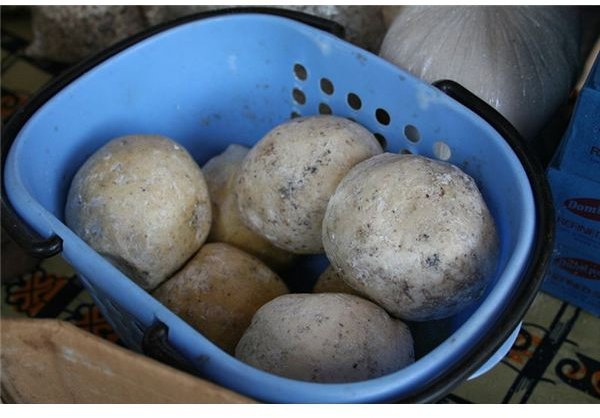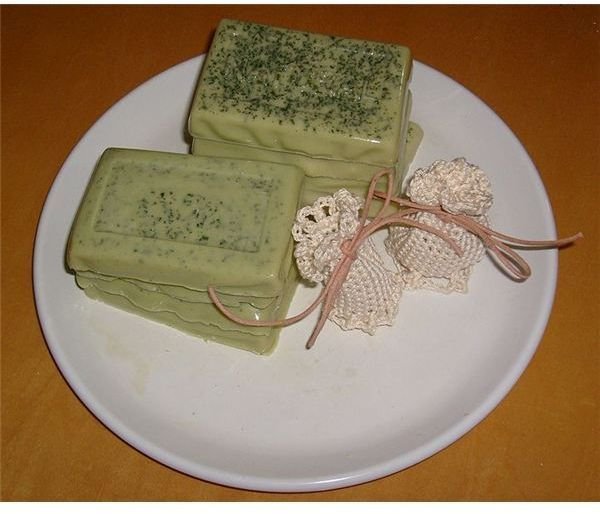Learn How to Make Natural Soap at Home
It has been estimated that the average person applies up to 10 different skin care products onto their body every day, and our skin absorbs nearly everything we put on it. Although commercial skincare companies maintain the ingredients they put in their products are safe, there really is no accurate method to determine how these ingredients affect us over time. Taking into consideration the fact that we normally lather up our entire body with soap at least once a day, learning how to make your own natural soap is not only a great way to save money and help the environment, but may be essential to the future of our well being.
When making soap at home, we recommend using a glycerin base or other high quality, unscented soap base. Carefully read the soap base product descriptions and ingredients list, and choose a base that is free from any chemical additives. Glycerin soap base is one of the most commonly used soap bases for making natural soap. Glycerin is actually a byproduct of the soap making process, and manufacturers usually remove it from basic soaps and sell it for a higher profit. The moisturizing properties in glycerin soap prevent skin dryness and this type of soap is recommended for use by people with sensitive and irritable skin. Being able to make a glycerin soap for a reasonable price is one of the main benefits of making your own soap.
Basic Steps to Make Natural Soap

Supplies:
- Soap molds
- Large heat resistant measuring container
- Sharp knife
- Grater
- Double boiler
- Candy thermometer
- Glycerin soap base or your preferred melt and pour soap base
- Wooden spoon
- Soap colorant
- Skin care nutrients
- Scent
- Additives or texture (optional)
- Spray bottle containing rubbing alcohol
- Wax paper
- Soft cloth
Instructions:
1. Measure the amount of soap base you will need to fill your molds. To do this, fill your molds with water and then pour the water into your measuring container.
2. Cut the measured amount of soap base off your solid block of base and then grate it for even melting.
3. Put your grated soap base into the top of your double boiler and attach your candy thermometer.
4. Heat your base slowly, over simmering water, until it has reached 150F. Stir occasionally until it is almost completely melted.
5. Remove the top pan from the heat and stir it just a few more times to completely melt any remaining chunks and it is smooth.
6. Add colorant - Soap colorants are available in solid, liquid and powder form, or make your own using natural herbs and spices. You will need approximately 1/8 tablespoon to 1 tablespoon for each cup of soap base. Start by gently stirring in a small amount and then add more as desired. White soap bases will generally need double the amount of color as clear soap bases.
7. Add nutrients – This is the time to add in your favorite skin care vitamins and nutrients, such as vitamin E, almond oil, oatmeal, milk powder and Shea butter. Oils can be added up to 5 percent of the weight of the soap, and powders can added up to 1 tablespoon per pound of soap.
8. Add scent – There are a variety of options to choose from when considering scent, such as essential oils, extracts and crushed herbs. Always add your scent after your soap base has cooled a bit to get an accurate fragrance. Keep in mind that some scents, like vanilla, may change the color of your soap.
9. Add additives or texture (optional) - The last ingredient to add to your soap would be any natural exfoliants or decorative textures, such as lavender buds or rose petals. These should be stirred in at the last minute right before molding.
10. Line your soap molds with wax paper for easy removal.
11. Slowly pour your soap into the molds. If any bubbles have formed, allow them to rise to the top and then lightly spray with alcohol to make them disappear.
12. Cover the molds with plastic wrap. Your soap will be hard in several hours or you can speed up the setting process by placing them in the refrigerator. Once your soap is hard, remove them from the molds and smooth with a soft cloth.
Easy Natural Soap Recipes
Lavender Beeswax Soap
- Glycerin soap base
- Violet coloring
- Beeswax
- Lavender essential oil
Aloe Vera Chamomile Soap
- Glycerin soap base
- Green coloring
- Powdered chamomile
- Aloe Vera essential oil
Orange Shea Butter Soap
- Glycerin soap base
- Orange coloring
- Shea butter
- Orange essential oil
Cinnamon Vanilla Oatmeal Soap
- Glycerin soap base
- White soap base
- Rolled oats (processed in a spice grinder)
- Cinnamon
- Vanilla extract
Now that you know the basics about how to make natural soap, experiment with your favorite colors, nutrients and scents. Your skin will be soft and radiant, and you can feel good knowing that you are using safe and natural ingredients on your skin.
References
American Academy of Dermatology: Cosmeceutical Facts and Your Skin - https://www.aad.org/public/publications/pamphlets/general_cosmeceutical.html
Soap Making Ideas: Glycerin Soap and All Things About It - https://www.soapmakingideas.net/glycerine-soap.html
Images Courtesy of: WikiMedia Commons – Durova & Marco Schmidt
